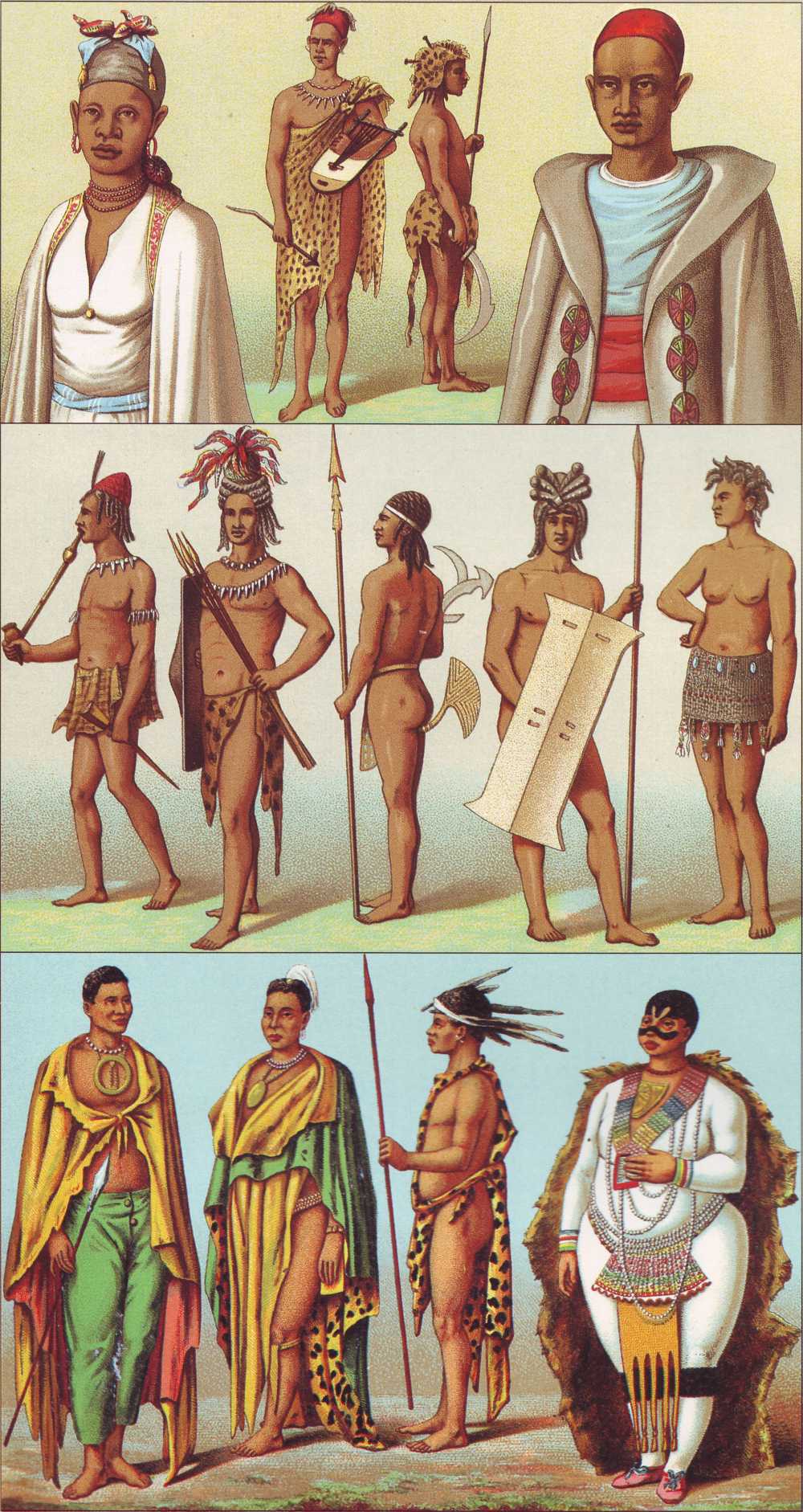
Shop Amazon - Create an Amazon Baby Registry
THE HISTORICAL ENCYCLOPEDIA OF COSTUME
ALBERT RACINET
THE CLASSIC WORK OF THE 19TH CENTURYp52-53

BECAUSE OF ITS SITUATION, Timbuctoo has become the principal station for caravans crossing Africa. The majority of the native inhabitants of Timbuctoo are Negroes, but alongside them live Arabs and Moors who stay in North Africa for business reasons. As a result, the local costumes are similar to those worn on the Mediterranean coast of the African Continent.
1. The gandoura, left, with wide sleeves, coral jewellery and a hood decorated with bows of silk or cotton. Unusually for this part of Africa, women are not compelled to wear veils. Far right is a tarboosh, an undervest and a jacket embroidered with silk.
The central figures in 1 are Chillouks, from the Upper Nile. They wear few clothes, but pay considerable attention to their headdresses. Men cover their hair with clay, gum and cattle dung in order to sculpt it into shapes such as helmets or fans.
The right hand figure of the pair is a king, wearing a regal headdress that consists of a fur fixed with large pins. His companion wears a panther skin and necklaces of shells and ivory.
2 A Chir left, from the Upper Nile, with plaited hair partly covered by a cotton cap. His loincloth is made of fig leaves and his necklace and bracelets from ivory. In one hand he carries a pipe with an earthenware bowl and a long wooden stem, and in his other hand a javelin.
To his right are two Niams-Niams tribesmen (the name means "big eaters"), tattooed with patterns of lines, zigzags and squares. Their loincloths are made of animal skins and belted at the waist. The straw hood, left, worn exclusively by men, has a flat top decorated with feathers. They carry javelins, barbed lances and, right, the troumbache - a sabre with many curved blades.
To their right are two Bazy (sometimes Bary) from the White Nile region. The Bazy men do not wear clothes, but smear their bodies with yellow ochre. Their headdress is very similar to that of the Niams-Niams and the Chillouks: a pile of curled and plaited hair, decorated with rodents' teeth, left. The woman, right, wears a beautiful loincloth covered with shells and pieces of glass.

3 A Hottentot, wearing a cloak of dyed skin and trousers with a bead necklace and a circular metal pendant. Remarkably, the Hottentot tailors cut clothes with only a knife and a needle made from a bird's bone.
To his right is a rich woman with a double-sided cloak: the outside is dyed and the inside is the skin of a panther. Her belt is made of glass beads and her necklace is a double string of beads.
Next is a Hottentot warrior wearing a panther skin tunic and a headdress of long feathers held with a headband. His ear is pierced with a bone and he carries an assagai.
Sarah Bartmann, right, wearing the national costume, became famous in Paris at the exhibition of 1815 under the name of the "Hottentot Venus".